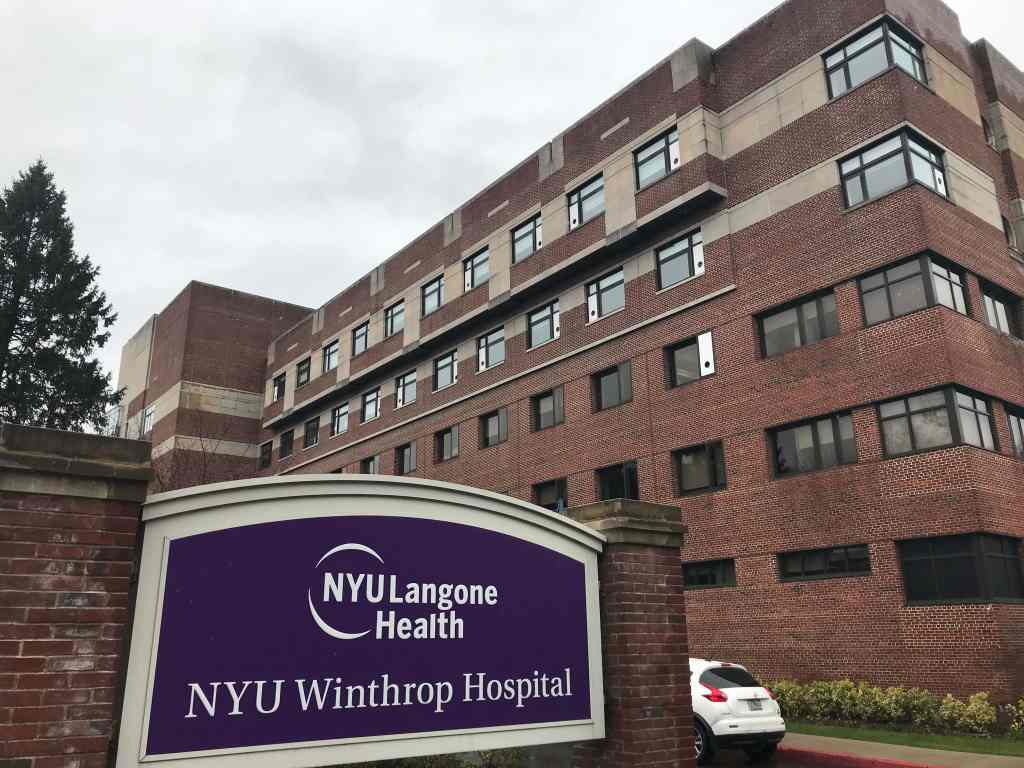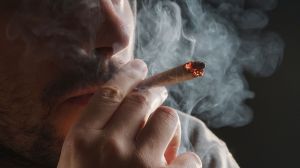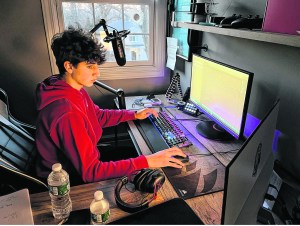Six Long Island hospitals deemed coronavirus hot spots in April have all experienced a decline in their number of COVID-19 patients, but as the medical centers adjust to the new normal, they worry about a possible second spike in hospitalizations.
The six hospitals that Gov. Andrew Cuomo termed coronavirus hot spots were NYU Winthrop Hospital in Mineola, North Shore University Hospital (NSUH) in Manhasset, Long Island Jewish Medical Center (LIJ) in New Hyde Park, Good Samaritan Hospital Medical Center in West Islip, Stony Brook University Hospital, and St. Francis Hospital in Roslyn.
“When a patient gets better and can leave the hospital, it’s a victory,” said Dr. Marc Adler, chief medical officer at NYU Winthrop. “It’s a personal victory for the patient, their family as well as the staff taking care of them. And it’s really just a wonderful thing to see.”
A 14-day decline in COVID-19 hospitalizations was among the metrics required for Long Island to begin phase one of reopening from the coronavirus shutdown last week. Hospitalizations are also down statewide. LI had comprised a fifth of pandemic hospitalizations at the peak.
As of May 16, the number of coronavirus patients at NYU Winthrop was down 70 percent from its peak in early April. In one week, their number of in-patient cases decreased by 16 percent, the number of ICU patients dropped 30 percent, and the number the overall COVID positive patient admissions was down by 65 percent. In total, NYU Winthrop has discharged more than 1,500 recovered coronavirus patients and counting.
At the peak of the coronavirus cases, Long Island hospitals compensated for the unprecedented influx of patients by bringing in outside staff. Hundreds of nurses, respiratory therapists, pharmacists, and pharmacy technicians, travelled to the region to assist the 22 hospitals fight the virus.
Stony Brook University Hospital, which reached its coronavirus peak on April 10 with 437 patients and had 101 as of May 21, has bid farewell to its outside help and does not plan to seek any more at this time, according to Dr. Kenneth Kaushansky, senior vice president for health sciences and dean of Renaissance School of Medicine at the hospital.
“We are so thankful for their assistance,” said Carolyn Santora, chief of regulatory affairs and interim chief nursing officer for Stony Brook University Hospital.
Northwell Health, which runs North Shore University Hospital, Long Island Jewish Medical Center, and 21 other hospitals, has also stopped the need for additional help in the hospital’s COVID-19 patient areas.
“We’re back into our usual footprint so that’s good news,” said Dr. David Battinelli, chief medical officer of Northwell Health.
NYU Winthrop still has a number of travelling nurses on staff who have been slowly leaving and are expected to continue into June.
A spokesman for Catholic Health Services, which runs St. Francis Hospital and Good Samaritan Hospital, said that they still have approximately 150 out-of-state health care workers assisting their hospitals.
“Having this additional workforce is allowing us to provide our front-line staff much needed time off,” said the spokesman.
On May 19, Cuomo announced that elective surgery could resume in Nassau County, joining Suffolk which had been given the OK three days earlier. As the hospitals catch up on previously planned procedures, new safety measures have been put in place.
According to Carol A. Gomes, chief executive officer at Stony Brook University Hospital, all staff and patients must wear masks, all patients are tested for coronavirus prior to surgery, and patients are required to self-isolate prior to surgery. All patients and staff are also screened for symptoms, all staff practice universal precautions based on guidelines issued by the U.S. Centers for Disease Control, and all patients testing positive for COVID-19 are treated in a designated area to minimize risk from other patients.
Doctors are hoping that their increased safety measures and constant monitoring of coronavirus patient numbers will ease the minds of people afraid to go to the hospital for necessary care.
“We need patients to recognize that we’re doing the best we can to keep them safe and that they can’t continue to avoid the hospital when they should be going,” said Northwell’s Dr. Battinelli.
At NYU Winthrop, there are several medical and surgical units deemed non-COVID areas so that patients may feel comfortable coming in with a non-COVID related issue. There are also non-COVID recovery areas where patients will also be treated by staff who do not interact with COVID-19 patients.
“We have regular meetings, in fact, on a daily basis that we know the census, we know every unit that’s currently being used for COVID patients, which units have non-COVID patients on them, and we follow the statistics throughout each day, seven days a week,” said Winthrop’s Dr. Adler. “So, if we see that there’s an uptick in one area or another, we’re able to reconfigure very quickly and move our staff around to accommodate it.”
Northwel’s Dr. Battinelli noted that anyone with serious symptoms should not hesitate to seek medical attention.
“We’re trying to make sure that we can help the communities of patients understand that for these types of things, for serious ailments and symptoms, your risk of staying home and addressing it on the fly is worse, way worse, than coming to the hospital,” Dr. Battinelli added.
For more coronavirus coverage, visit longislandpress.com/coronavirus
Sign up for Long Island Press’ email newsletters here. Sign up for home delivery of Long Island Press here. Sign up for discounts by becoming a Long Island Press community partner here.



























